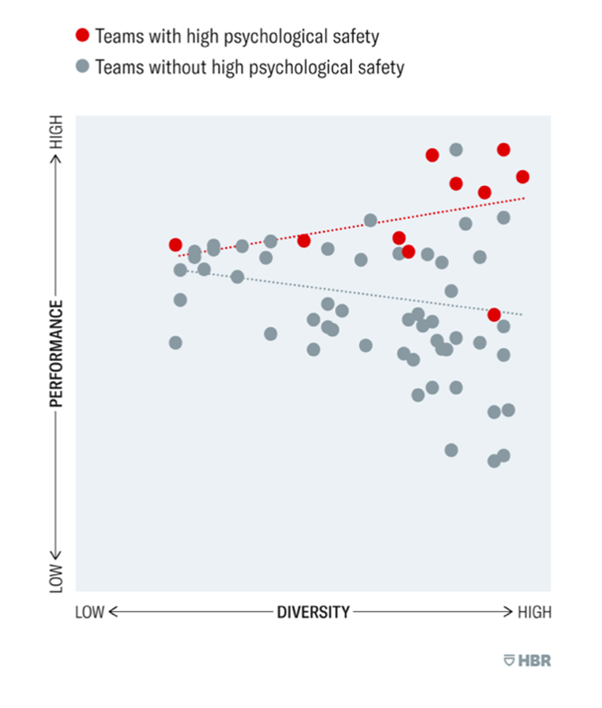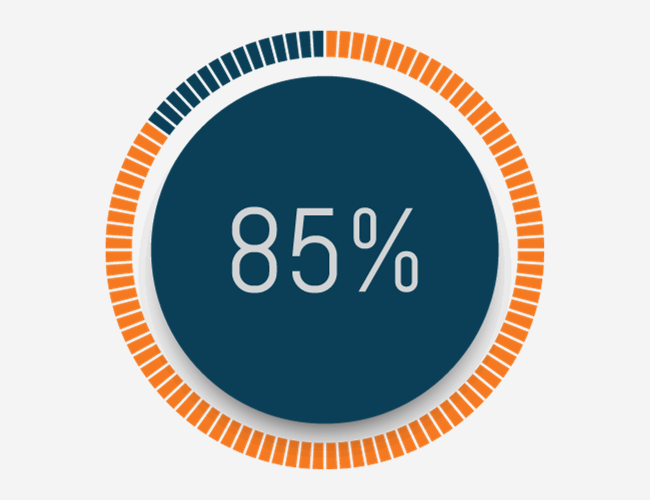Aside from the obvious social and moral reasons for increasing diversity in the workplace, companies attempting to diversify their teams are doing so in the hopes that it will increase efficiency and profitability. These efforts receive support from several studies showing that diversity is correlated with improvements in problem solving and innovation.
While diversity may be good for organizational outcomes, theorists have long speculated that diversity alone isn’t enough to guarantee them. Many have focused on the importance of psychological safety (i.e., the ability to express one’s thoughts without fear of being punished, ridiculed, or humiliated). They argue that unless employees feel free to discuss their ideas, they may hold back their unique perspectives. Assuming diversity-related improvements in problem solving and innovation depend on the free-sharing of novel ideas and viewpoints, a lack of psychological safety in the workplace may prevent diverse teams from excelling.
Experimental Confirmation
Until recently, the connection between psychological safety, diversity, and team performance was purely theoretical. Professors Henrik Bresman and Amy Edmondson set out to change that. To verify the hypothesis that psychological safety is the key to unlocking the performance potential of diverse teams, the researchers examined 62 drug development teams at six large pharmaceutical firms. Using questionnaires to measure diversity and psychological safety along with team performance ratings from senior leaders to measure achievement, the researchers examined correlations between performance, diversity, and psychological safety.
The researchers found that, on average, diversity had a negative effect on performance when not coupled with psychological safety. However, when teams felt psychologically safe, diversity enhanced performance.

The team also found that psychological safety impacted the effect of diversity on job satisfaction. Specifically, they found that diversity increased job satisfaction but only when groups felt psychologically safe.
While these findings are compelling, one of the study’s limitations is worth noting. The researchers’ measure of diversity did not include racial or cognitive diversity questions. In all likelihood, team members who are diverse in these ways will require psychological safety to contribute in effective ways. However, the study did not include the measures needed to confirm that.
Tips For Increasing Psychological Safety
By taking the following steps, employers can create a psychologically safe workplace where diverse teams can thrive.
- Measure it: To determine whether one needs implement strategies to increase psychological safety and evaluate any tactics used, it is important to measure the levels of psychological safety within your organization. Try sending out an anonymous survey with the following questions:
- Do you feel you can raise problems or difficult issues with your team?
- Do your team members get angry with you if you make a mistake?
- Do your team members value your thoughts and views?
- Do you feel comfortable asking others for help?
- Are different or unusual ideas quickly dismissed?
- (Re)frame the discussion: The degree to which one feels comfortable expressing their ideas depends, among other things, on what they think the point of the discussion is. Bresman and Edmondson note that most meetings are framed as “decision-making encounters,” which creates the risk of voicing an incorrect solution. They argue that leaders should replace this goal with one of “information-sharing” so that employees are not concerned about offering up a “bad” idea.
- Offer up a wacky idea: Discussion leaders can swiftly create a psychologically safe environment by proposing their own unusual idea. In doing so, they set the tone for the rest of the meeting and encourage everyone involved to offer up any ideas they have, regardless of how unexpected, unusual, or counterintuitive they may sound.
- Create a culture of empathy: Psychological safety won’t be achieved if employees feel their coworkers are unlikely to understand where they are coming from. To combat this, leaders should instill norms of empathy and perspective-taking. This will encourage employees to “try on” the viewpoints of their colleagues, which will dispose them to react to novel ideas openly without criticism or judgment. Employers looking for a more technological solution may want to utilize virtual reality (VR) empathy training. Studies have found that this immersive solution can help employees feel more empathetic toward each other.












